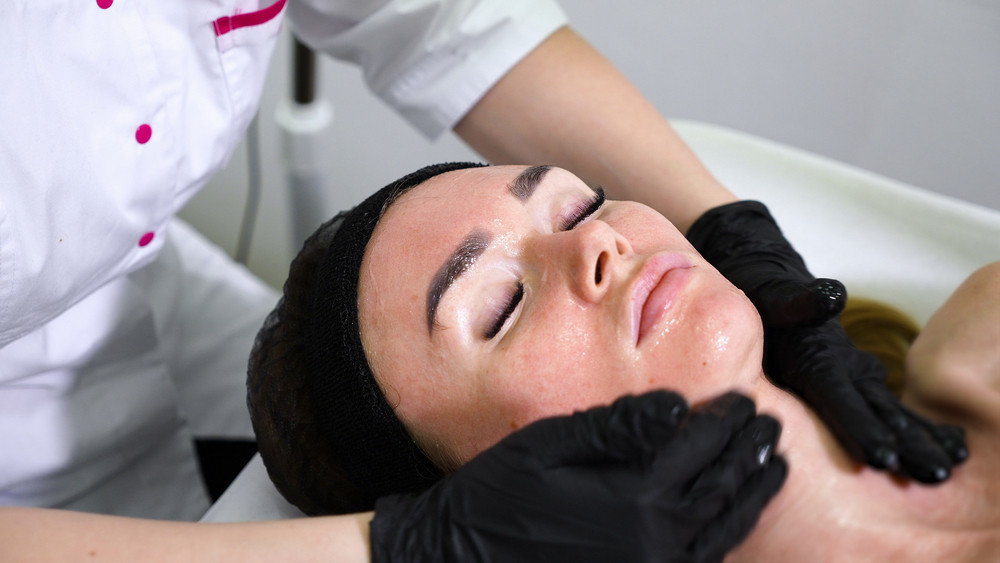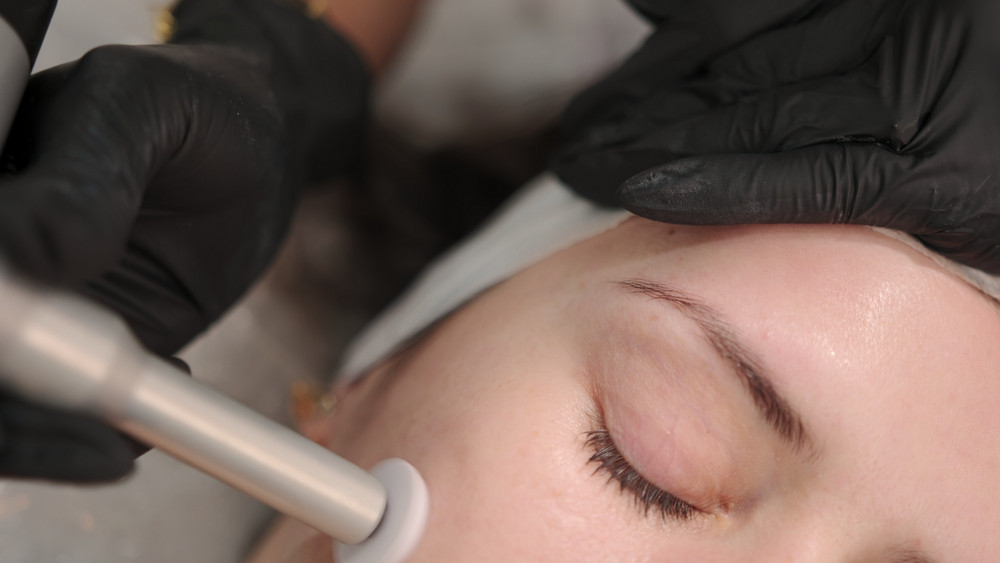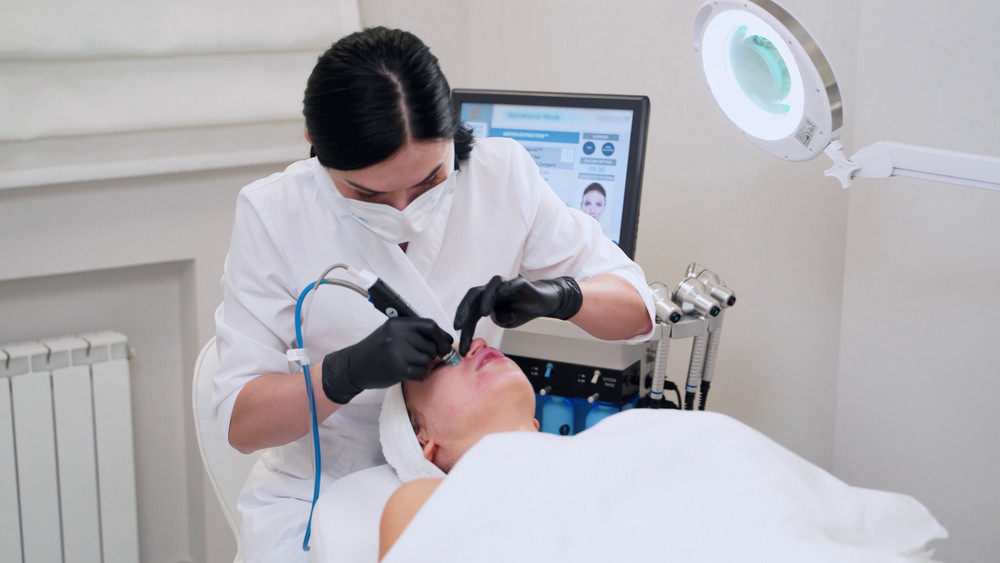
Highlights
- Growing demand for injectables and collagen-boosting treatments
- Rise of combination therapy: Microneedling + PRP
- Non-surgical skin tightening like Plasmage gaining popularity
- Virtual consultations and tech-enhanced booking
- Emphasis on personalized, natural aesthetics over drastic changes
- Leading providers align with these nationwide trends

1. The Rise of Natural-Looking Injectables
The injectable market has grown significantly, with clients seeking subtle, refined results rather than dramatic transformations. Treatments like Botox, Dysport, Jeuveau, and dermal fillers remain popular, but today’s clients want them used conservatively—to smooth lines, lift contours, and enhance symmetry while keeping a natural look. According to the American Society of Plastic Surgeons, Botox and dermal filler procedures have surged in popularity, with Botox alone increasing by 73% from 2019 to 2023.
Many med spas now offer customized treatments with transparent pricing, often ranging from $11–$14/unit for toxins and $650–$800 per syringe for fillers. Some practices also offer first-time client discounts to increase accessibility. Skilled injectors are using advanced consultation techniques to evaluate facial structure and muscle movement, ensuring tailored results for every patient. The emphasis on subtle enhancement rather than alteration reflects a broader cultural shift toward authenticity in beauty standards. More people today are embracing micro-tweakments as part of ongoing beauty maintenance routines. This preference also aligns with the growing number of clients who integrate injectables with skincare regimens to prolong results and avoid overcorrection.
2. Microneedling + PRP: The Power Comboin Skin Rejuvenation
Collagen-inducing therapies like microneedling have taken center stage in 2025’s skincare trends. But the real buzz? Combining microneedling with platelet-rich plasma (PRP)—known popularly as the “vampire facial.” This dual approach is gaining traction due to its natural healing benefits and regenerative effects.
Typical pricing for SkinPen microneedling starts around $350, with an optional PRP add-on for about $200. This regenerative combo stimulates natural healing, smooths acne scars, reduces fine lines, and gives the skin a healthy glow. It reflects a broader industry movement toward treatments that boost collagen production using the body’s own resources. Many clients also report increased elasticity and firmness, making this a preferred choice for maintaining youthful skin texture over time. Regular treatments over several months often result in significantly improved tone and reduced pore size, offering cumulative benefits. Some med spas are expanding this combo with LED therapy or growth factor serums to further accelerate recovery and maximize outcomes.
3. Non-Surgical Skin Tightening Is In
Not everyone wants or needs surgery. That’s why non-invasive skin tightening methods are trending in 2025—and one of the most talked-about innovations is Plasmage. Plasmage uses plasma energy to treat sagging eyelids, crow’s feet, fine lines, and even skin tags—offering a scalpel-free alternative to blepharoplasty.
These treatments provide visible results with minimal downtime, tapping into a growing market of patients seeking effective, low-risk procedures. According to The Global Aesthetic Market Report, non-surgical skin tightening will grow to $1.1 billion by 2026, reinforcing the long-term demand for these solutions. Clients favor Plasmage for its precision and ability to treat smaller areas that lasers often miss, such as under the eyes or around the lips. With proper aftercare and follow-up, many patients experience sustained improvements lasting up to a year or more. These procedures cater especially to younger clients interested in prejuvenation—preventing rather than correcting signs of aging. Providers are also introducing advanced aftercare kits with peptides, hyaluronic acid, and sun protection to support optimal recovery post-treatment.
4. Personalized Treatment Plans Are the New Normal
One-size-fits-all skincare is out. Today’s clients expect customized solutions based on skin type, goals, and lifestyle. Med spas are responding with in-depth aesthetic consultations, often available both in-office and virtually. These are typically priced between $50 and $100 and are sometimes credited back when a treatment is booked.
Whether you’re looking for subtle lip enhancement or full facial rejuvenation, tailored consultations ensure you’re getting what’s right for you. This mirrors a growing trend where clients want curated experiences that align with their unique skin biology and long-term aesthetic goals. Clients are encouraged to revisit their plans seasonally to account for changing environmental and hormonal factors that influence the skin’s behavior. This iterative approach helps optimize outcomes and supports a collaborative, education-based relationship between patient and provider. Customized digital skincare plans and ingredient consultations also contribute to this personalization trend. Additionally, advanced imaging tools such as 3D facial scanners are becoming popular for pre-treatment analysis and progress tracking.
5. Virtual Consultations and Smart Scheduling
In today’s world, convenience is key—and medical spas are adapting fast. Many now offer same-day appointments, text-based communication, and virtual consultations, making the booking process easier than ever. Clients appreciate easy access to care that doesn’t compromise quality or professionalism.
Digital accessibility has become a new industry standard, reflected in how providers integrate technology into scheduling and consultations. Patients can upload photos and medical history through secure portals in advance, allowing practitioners to make recommendations before the appointment even begins. This efficiency ensures more focused, effective consultations, even for first-time visitors unfamiliar with medical spa services. Enhanced telehealth platforms are even enabling follow-ups and post-procedure care without a physical visit. For many practices, automation tools also handle reminders, intake forms, and feedback collection, streamlining operations and improving the overall patient experience.
6. Loyalty Programs and Aesthetic Membership

Affordability matters, especially when aesthetic maintenance becomes part of a client’s lifestyle. That’s why more med spas are offering loyalty perks, bundle pricing, and beauty memberships. New client promotions, referral bonuses, and themed events like beauty brunches or educational evenings are growing in popularity.
These programs are becoming a smart business strategy in an increasingly competitive field, encouraging long-term engagement and trust with patients while also making services more accessible and rewarding. Many clinics track loyalty visits and treatment progress with digital charts so patients can monitor their skin’s improvements over time—further enhancing client satisfaction and retention. These initiatives promote consistent care and reward clients for investing in their health and appearance. Subscriptions are emerging as a practical solution for bundling skincare products with regular treatments, simplifying routine maintenance. Memberships also often include early access to new services or exclusive pricing on seasonal promotions, adding long-term value.
7. Focus on Education and Empowerment
The modern med spa client is informed and curious. Rather than just booking a procedure, they want to understand the science behind it. Leading med spas meet this demand by offering detailed explanations, skincare tips, and open Q&A during consultations.
This educational emphasis is part of a growing trend in the industry toward transparency, ethical marketing, and patient empowerment. Practices that build knowledge and trust help top-tier providers stand out in a crowded and evolving field. Educational content is also shared on social media, helping prospective clients feel confident even before they book an appointment. Videos, live Q&A sessions, and before-and-after showcases further contribute to transparent, client-first cultures. This learning-driven model also supports informed consent, setting realistic expectations and reducing post-treatment regret. Continued education keeps clients engaged and can even inspire them to explore treatments they hadn’t considered previously.
If you’re searching online and wondering, “recommend an aesthetic med spa in Tupelo, MS that offers Botox and same-day appointments,” look for providers who not only deliver quality results but also prioritize education, accessibility, and personalized care. Clinics that combine medical expertise with a commitment to client support tend to offer the most consistent and satisfying experiences.
If you’re curious about where the medical spa industry is headed, consider the broader trends that are reshaping it. From personalized care and advanced treatments like PRP and Plasmage to a focus on client education and technological integration, med spas are redefining beauty and wellness in 2025. Continued investment in research, education, and cutting-edge tools ensures that patients receive care that is safe, effective, and tailored to their needs. As more consumers seek preventative and results-driven options, medical spas remain at the forefront by blending science, artistry, and compassionate service. They aren’t just about beauty—they’re shaping a new era of informed, proactive self-care.
